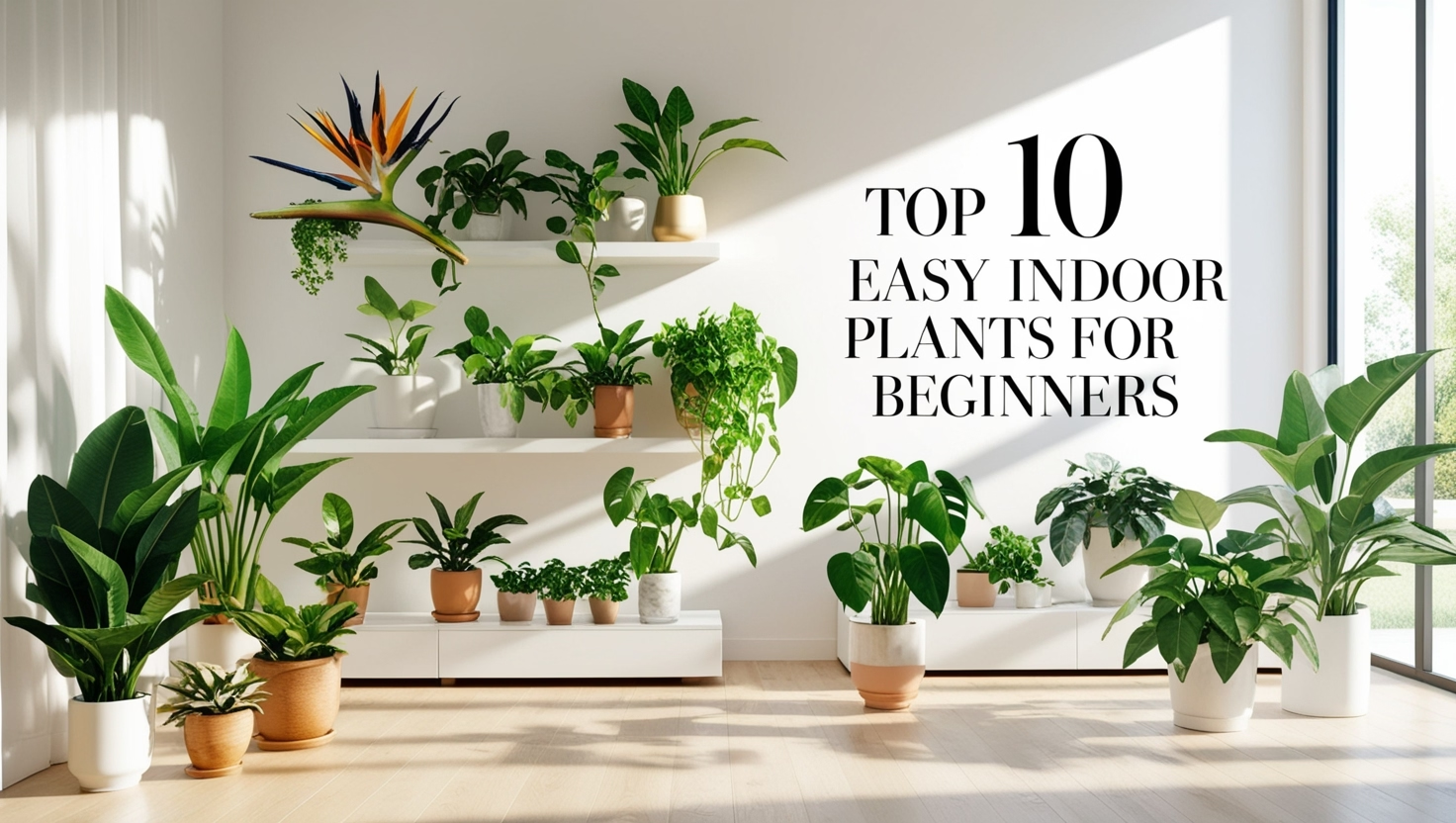
Top 10 Easy Indoor Plants for Beginners
Hello friends and welcome back to my blog. In the last month, I have done two separate articles about plants that I think you should avoid if you are new to the plant hobby. It got me thinking. What plants would I suggest if you are brand new to plant parenthood? What would my top 10 plants be like? What do I think people’s first 10 easy indoor plants should be and why? So, I have put together a list.
It took some thinking because there’s so many great options to choose from. But I really wanted to narrow it down to something reasonable like 10. Like 10 things that I wish at the beginning of my plant journey were my first 10 plants. Also, I will say that all of the plants on this list you should be able to find in most plant shops. You’re not going to need to go about and search for them. They are common. They are available. And they are usually not very expensive as well, which is awesome.
So, this is my perfect list. If I had to start all over, these are the plants that I would suggest.
Why Easy Indoor Plants Matter
Before I get into it though, I want to say if you’re new here and you don’t know me already, hi. My name is Emma, and I make house planty content all over the internet. So, if you want to follow along with my house planty journey and maybe learn something along the way, stick around.
If you are not new here, welcome back. I really appreciate it. One more quick thing before we start. This is just my opinion. You don’t have to do anything I say. But this just comes from my years of experience as a plant parent and what I think makes the most sense to start out with as a plant parent.
So, you don’t have to listen to my advice. This is just my opinion. Um, and also, this is in no particular order because I couldn’t possibly actually rank these easy indoor plants.
How to Choose Easy Indoor Plants
#1 Bird of Paradise: Jungle Vibes Made Simple
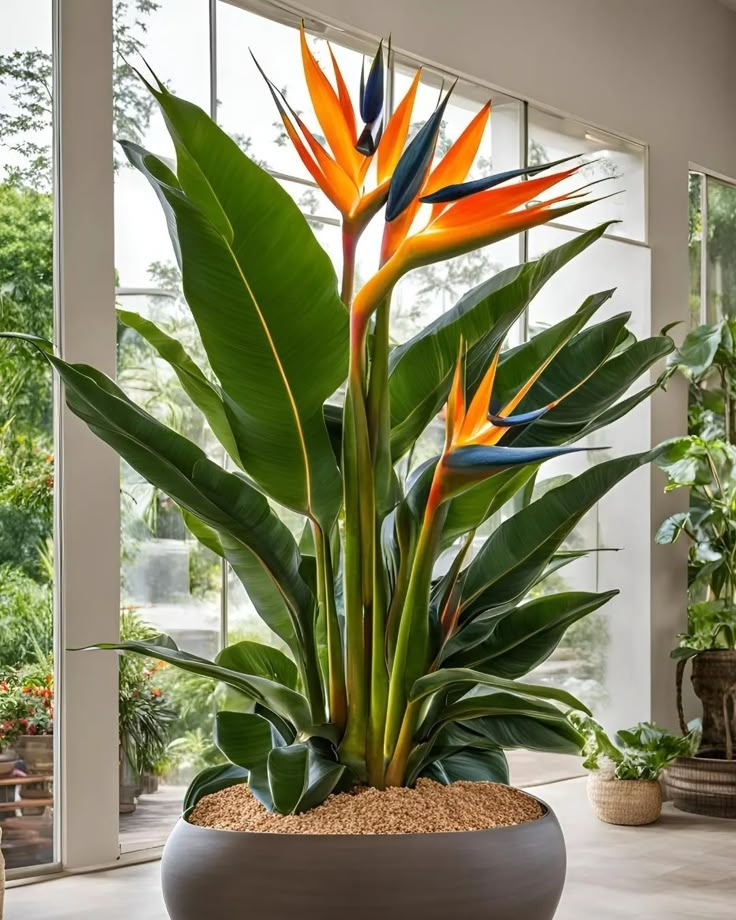
Starting off with an absolute statement of a plant, the bird of paradise. This one will immediately add jungle vibes to your home. And you can get one that’s quite big for not too too much money. They do also grow large if you give them enough light and time. Mine hasn’t necessarily gotten the best light in the world, but it is growing quite well.
It’s right in front of a southwest-facing window, so getting as much light as it possibly can in my home. It’s in one of the brightest spots in my home, and it is still growing very very steadily, which is awesome. But these ones are super chill. They don’t actually add that much extra work into my planting. I probably do also underwater it a little bit, and it doesn’t seem to throw a fuss with me.
It never gets to the point where it gets really floppy or anything, ‘cuz some easy indoor plants do that. They’ll show you that they’re thirsty. This one, I don’t think I’ve ever let it get—I’ve never seen it get to a point where it’s like wilted because it is so thirsty. They are just so tolerant to kind of whatever you throw at it. And it just makes the space a really really nice green space. And it is kind of the perfect big star statement plant in my opinion.
#2 Marble Queen Pothos: Versatile and Easy Indoor Plants

And then I would suggest a marble queen pothos. I mean, I suppose you could go with any sort of Epipremnum aureum, whether that be a golden pothos, Pearls and Jade, Manjula pothos—any of those would work. But I personally like the marble queen the best because I think the variegation adds a little bit of something extra to at least this list.
I feel like having different sort of textures almost—obviously the leaf itself isn’t textured, it’s quite smooth—but the dappling of the white variegation makes the leaf look textured. And having that in there, I feel like, is a really great way to spice up the collection a little bit. And in general, pothos are one of the easiest plants to take care of.
You can either grow them trailing down, you can climb them up something, you can have it hanging in a basket, you could pop it on a shelf and have it trail along that. You have it trail down—you can kind of just mold it to fit the space that you have. And that makes them a great plant to begin with.
They are also, in my opinion, one of the easiest propagators. It is a great plant to learn how to propagate with because they are so hearty with propagation. Pothos were some of the first plants I ever propagated, and I found that it was the perfect—the perfect way to learn about how and when to do it.
Whether you’re propagating with water because you’re just beginning and you don’t want to get loads of different supplies, or you’re going to moss, or you’re just trying to pop it straight back into soil—all of those options will be probably pretty fine for the marble queen or any sort of pothos. So, it is a great one to like get you learning a little bit as well.
#3 Cast Iron Plant: Tough and Pet-Safe
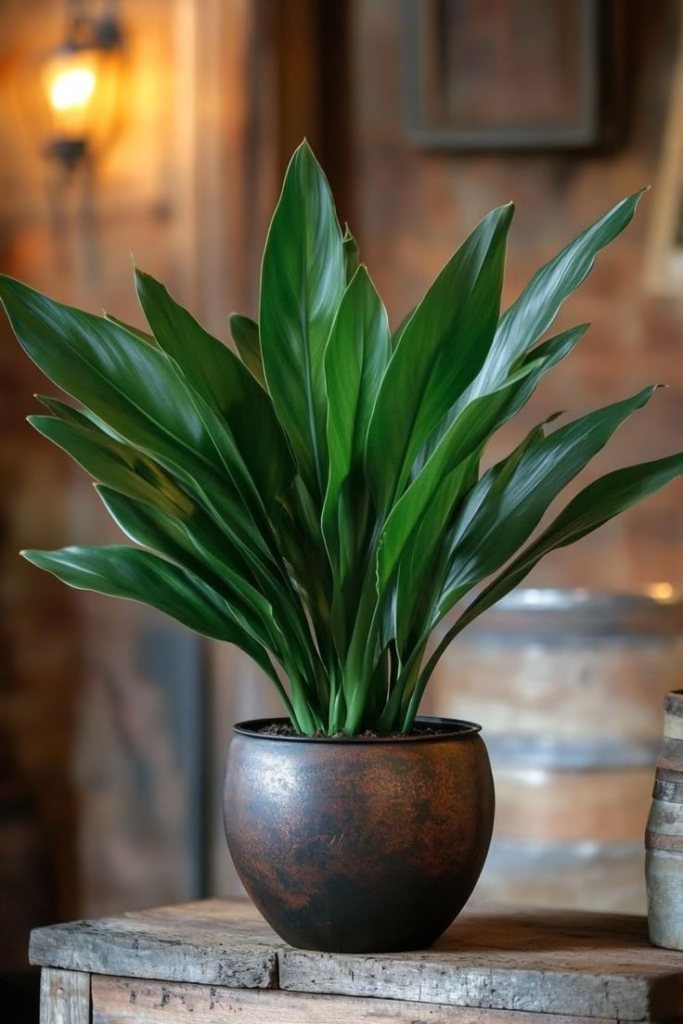
The cast iron plant can tolerate nearly any home conditions, and that is why I’ve put it on this list. Because it is so freaking hearty. They’re called cast iron plants because cast iron is such a hearty material. You don’t need to worry about it like scuffing, scratching—it can go in any sort of environment and be absolutely fine.
And that is true of the cast iron plant, or the Aspidistra elatior. They are tough, and it makes for a really great beginner plant. I would suggest, however, that if you did want a large one, you buy one that’s a little bit bigger. I know they do cost a little bit more money, but it is because they’re slower growing.
And so, if you want a big one, you kind of need to buy a big one. I’ve had mine for several years now, and it still hasn’t grown all that much. But they can tolerate very very low light—almost up to no light, I say tolerate. I should state as well, when I say tolerate low light, they’ll obviously thrive better in higher light.
But you can’t have all your easy indoor plants in high perfect light all the time—at least I can’t in my home. And so, having something like a cast iron plant is great to put in a space that’s not necessarily ideal for other things. Also, a benefit of cast iron plant is that they are pet-safe.
So, if you have pets, you don’t need to worry about them eating that and them being toxic to your animals. So, it’s a really great one to begin with. And again, I do think this one provides a little bit of statement.
I feel like all of these plants actually would create a statement in your home if you don’t have loads and loads of plants. All of them will look absolutely beautiful in your space. They can be very versatile, and the cast iron plant is no exception to that.
Also, with the cast iron plant, they can tolerate really huge range of temperatures—from very very cold to very very hot—and they will not throw a fuss either. So, that’s great. They also don’t need incredible amounts of watering.
I feel like I could just bang on about the cast iron plant all day because it is such an easy, versatile plant that I just never need to worry about.
#4 Rhaphidophora Tetrasperma: Fast-Growing Fun

On the contrary, the Rhaphidophora tetrasperma can grow so freaking fast. Mine just zoomed climbing its moss pole. But you don’t actually necessarily have to have them on a moss pole. Even just being on a trellis, having something like that, or put them next to a wall and let the wall support them—they all they want is a tiny little bit of support.
And they will just climb up that. And I think that’s great. It makes for a plant that is like quite fun to watch because you get to keep seeing how high it’s climbing. And it grows just so fast—one of the fastest-growing plants I have in my collection at least.
Also, the sort of fenestrated leaves are really fun. They add a little bit of difference to the other easy indoor plants on this list, most of which are not fenestrated. And so, having some that can grow these fenestrations is a really fun addition to this list.
#5 Hoya Carnosa: Colorful and Forgiving

I would definitely recommend getting some sort of Hoya carnosa at the beginning—whether it be a Crimson Princess or Crimson Queen or just the plain green carnosa. Those are probably some of the easiest to find Hoyas, in my experience at least. You’ll probably be able to find at least one in most plant shops.
And they can tolerate quite a lot. I have grown my Crimson Princess from cutting, and though it has been a little bit slow to grow, that is absolutely fine. I never have to worry about it. I’ve surely neglected it in some spots I put it in my home, and it is still just chugging along.
And the fun thing about Hoya is you can again let them trail down, or you can put them and wind them around a trellis to grow upwards. And with the Crimson Princess and Queen, those ones can add a fun bit of color into your collection as well.
Because the new leaves, when they’re coming in, any parts of the leaf that are going to end up white color or a creamy color will come in a bit more pink. So, it does add a little bit of fun color to your easy indoor plants as well.
And also, a fun thing about Hoya is that they do bloom. I know carnosa are not known for being extraordinary bloomers, but it could bloom for you. And Hoya flowers are really fun. That being said, I’ve not had my carnosa bloom yet.
One day, I will get there in time. I’ve been growing mine from cutting as opposed to buying them as actual plants. If I had bought one as a full plant, I’m pretty sure it probably would have bloomed by now.
#6 Snake Plant: Low-Maintenance Classic

I don’t think this list would be complete without a snake plant or Sansevieria on here. I know they have been reclassified as Dracaena, but I call them Sansevieria just because I feel like Dracaena is kind of a whole different thing.
But some sort of snake plant is a great addition as well. Similar to the cast iron plant, they are very very hearty. But these ones are more hearty in a semi-succulent kind of way. You really don’t need to worry about watering them all that often.
I sometimes go months without watering mine, and they are still absolutely happy with me in my collection and growing quite well. They can also tolerate very low light and be fine. You can put one in a dark corner, and it’s not going to be a problem.
Or you can put it in a brighter spot, and it’ll probably grow a little bit better. Like I said earlier, just ‘cuz it tolerates the dark doesn’t mean it’s ideal. But it can continue growing in a dark spot and make for a really cool plant.
You could go for the classic mother-in-law’s tongue, or there’s many other different varieties of snake plants with different leaf shapes. Some are darker green, some have more yellow, some have lighter green, some are more cylindrical and more wacky, some are very straight.
So, you can kind of just get the one that you want for yourself in your home. It doesn’t really matter. They all have—I don’t find any of my snake plants harder to care for than any of the others, so I wouldn’t worry about which one. Just get one.
#7 Aglaonema: Colorful and Low-Maintenance
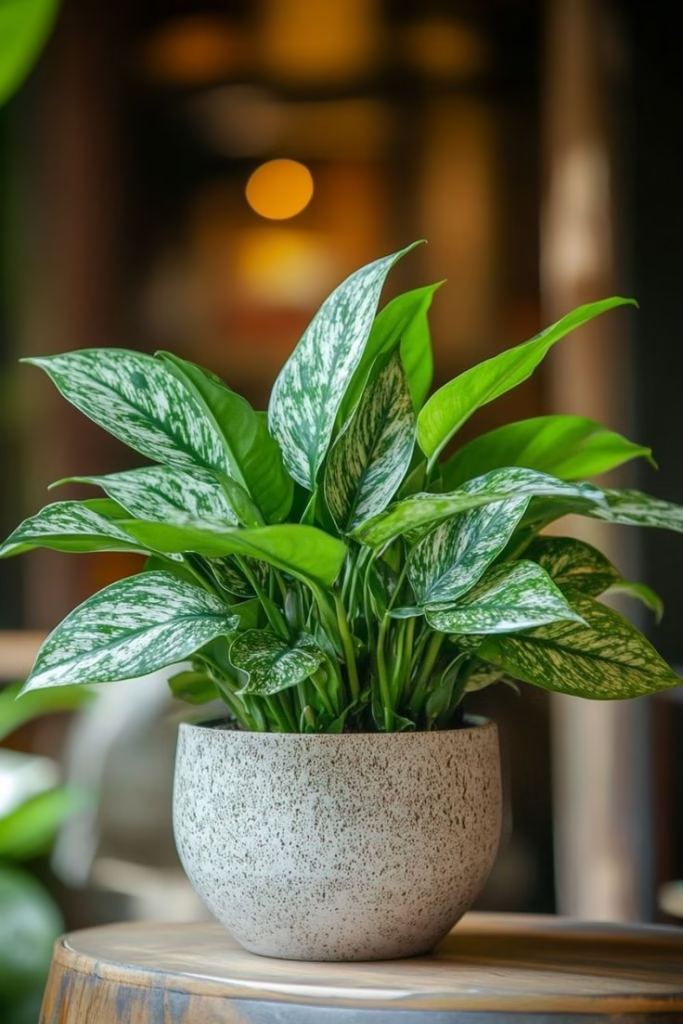
Another one with loads of varieties is Aglaonema. Some of them almost look kind of like calatheas in their leaf shape, except they are far less finicky than calatheas. If you were considering getting something like a calathea, go for an Aglaonema instead.
‘Cuz they kind of have those long, narrow leaves and those stripes similar to many types of calathea. But they are not picky at all. They don’t really require any extra humidity or really intense watering. I found that my Aglaonemas dry out at a pretty average pace.
They’re not super duper thirsty like calatheas can be. And you can also find lots of variety in colors with Aglaonema. You can get the typical green ones, but the ones I have tend to lean more silver-blue side.
You can also go find ones that are on the pinker, redder side. And so, there’s a lot of different variety in there. And if you want to add more color to your collection, you can do that. But you don’t have to with them.
And they all tend to be fairly similarly low-maintenance easy indoor plants.
#8 Monstera: Iconic Easy Indoor Plants
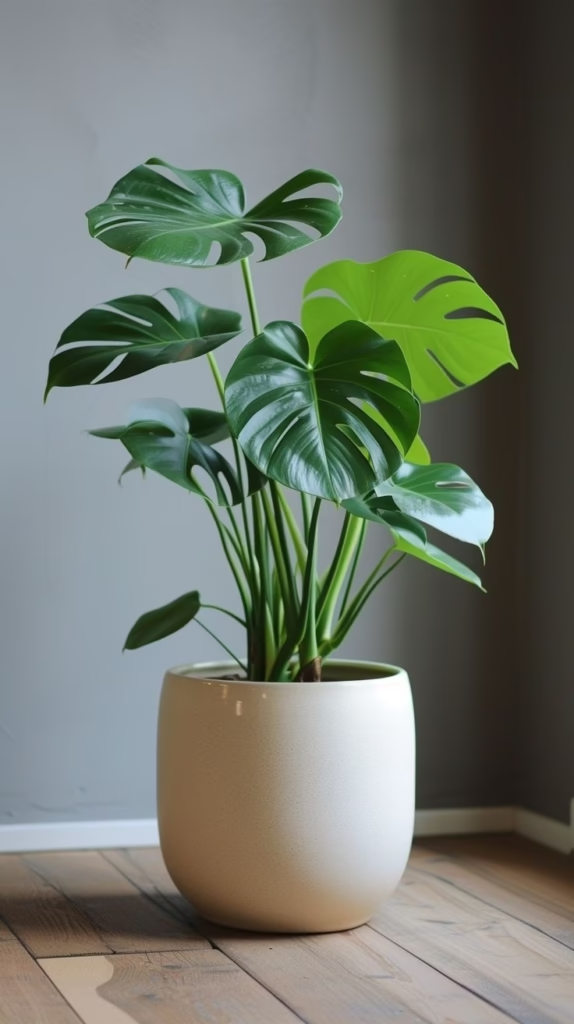
I don’t think I could actually make a house plant list of plants you should buy as a beginner without putting Monsteras on there. Monsteras are the sort of classic, classic symbol of house plants. They have those beautiful fenestrated leaves with the splits and holes in them that are absolutely iconic at this point.
They are the house planty house plant. Like, when you think of house plants, you think of Monsteras—at least I do. And so, it’s great that they’re also fairly low-maintenance. They can be quite easy to grow.
I will, however, say if you are buying one and you want that sort of really big leaf look, do buy one that is fairly big already. ‘Cuz I personally have had several Monstera deliciosas in my time that I think weren’t actually deliciosas.
They were borers, and they had wider internodal space, and they didn’t grow those big, beautiful leaves. They did have fenestrations on them, but they didn’t grow those like really really big ones that I desired.
So, if you want that sort of really big look, I suggest buying it off the bat because otherwise you could be disappointed down the line. I’ve also found that Monsteras are fairly drought-tolerant, and they’re not going to kick up too much fuss in your home if it’s not super humid or anything.
I will also say they would like more light as opposed to less light. They’re not going to tolerate being in a dark corner as much as some of the other easy indoor plants on this list would. So, try and put it in a brighter spot in your home if you can.
#9 Scindapsus: Stunning Trailing Beauty
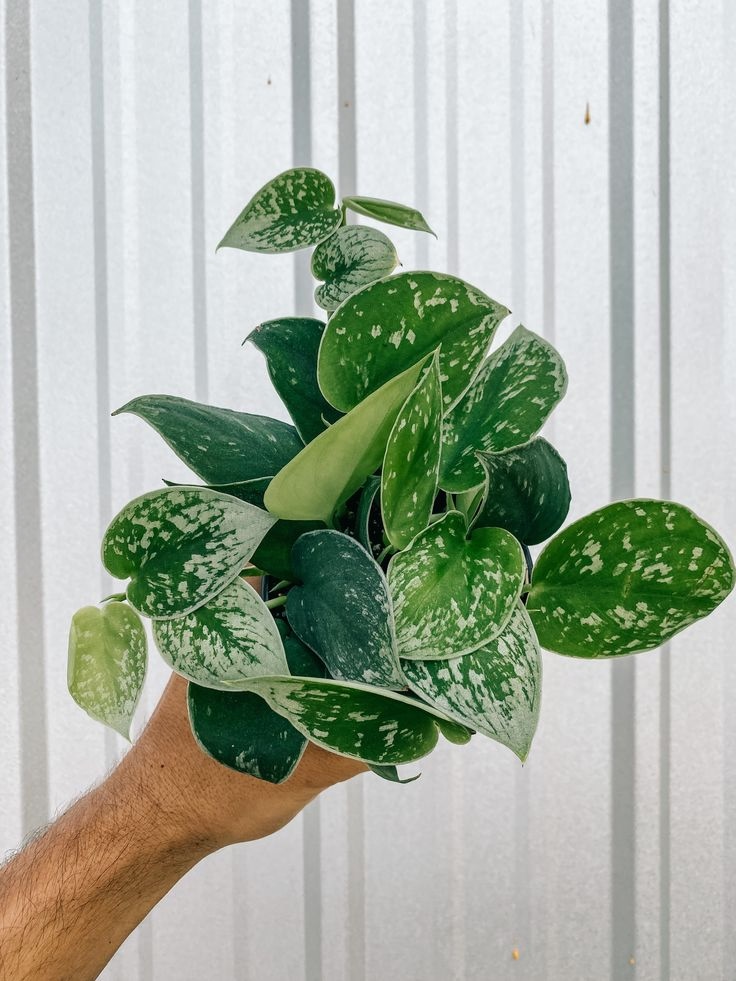
Another beautiful trailing plant is a Scindapsus. And I personally would recommend an Exotica over an Aureus. You’ll probably find both available. If you can’t find an Exotica, an Aureus would be absolutely fine.
But the Exotica is the one that I would highly recommend at the beginning just because their leaves are a little bit bigger. And how can you not love those beautiful dark green, almost velvety-looking leaves with silver spots—shiny silver spots?
What is not to love about that? They just grow so well. They’re not picky at all. If they get thirsty, their leaves curl in, and then when you water them, they uncurl and are absolutely fine with that.
They don’t—they don’t like hold a grudge at all. Again, they are easier to propagate, similar to pothos, but I’d say probably a little bit slower than pothos. And again, just beautiful trailing bits of like silver-spotted leaves.
Like, talk about adding variety to your house plants. It’s the perfect one to contrast sort of solid green big leaf like a Monstera or a bird of paradise. I feel like putting a Scindapsus next to that—it just looks so so great in my opinion.
And again, they are super hearty and tolerant that you don’t need to worry about them. I don’t need to worry about my Scindapsus at all. And actually, a Scindapsus was one of my first plants, and I am so so glad that’s where I started.
#10 Fishbone or Fern Leaf Cactus: Unique Jungle Texture
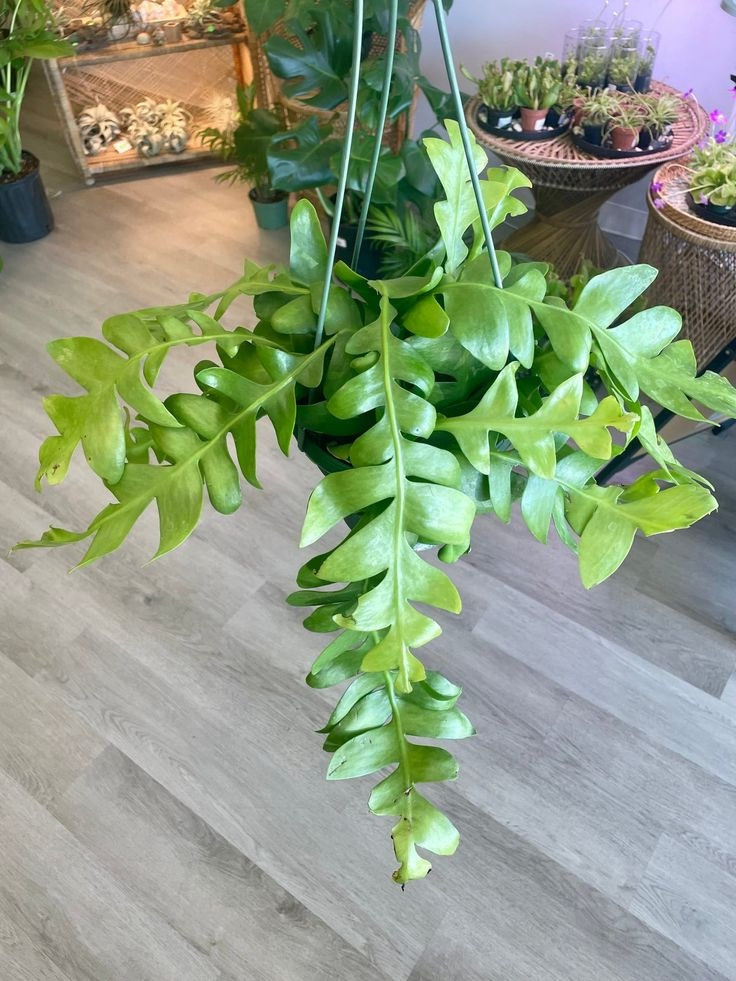
And then for the final plant, I actually kind of struggled picking one out because there were so many different things I had on my mind for this last plant. But I have gone with one—kind of two.
I feel like these both fit into the same sort of category—either a fishbone or a fern leaf cactus. These sort of cacti are jungle cacti, and so they’re not going to be needing a really dry environment like you’d think other like sort of the like classic cactus cactus will.
They will want much more water than that—same as you would probably water most of the other plants in this collection of plants that I have curated for you. They will want about the same amount of water, and I think that is quite useful.
Um, to have similar care plants. And the sort of vibes this gives off—it’s genuinely all texture. The sort of zigzagging of it adds something so so special to a collection and really enhances the jungle vibes in your home.
Also, these jungle cacti are a great way to learn about soil propagation. And I know I talked about my marble queen being great for learning propagation—jungle cacti are the easiest to propagate in soil.
I wouldn’t even consider propagating my jungle cactus in any other way at this point. Just plunking them in the soil and keeping an eye on the roots for a little bit is the perfect way to make sure that they are getting like propagated.
And you can really get them to multiply that way through propagation. So, I feel like it is the perfect ending to this list.
What These Easy Indoor Plants Offer You
So, that is it. Those are the 10 plants that I would suggest starting out with if I could start over my entire plant journey. If I was starting from knowing absolutely nothing, these are the 10 plants that I would want to begin with.
And yeah, I’d be curious to hear if you agree with me on this. If you have—if you have ones you would substitute out for something else, let me know down below in the comments. And this can be a wealth of information if you are looking for more sort of beginner plant help.
Head down to the comments below, and you can find them. Thank you so much for watching. If you like this article, please leave a thumbs up down below and leave a comment on other house planty things you’d like me to talk about in the future.
And comment for more house planty content. I hope you are having a fantastic day. Don’t forget to keep growing. Bye!